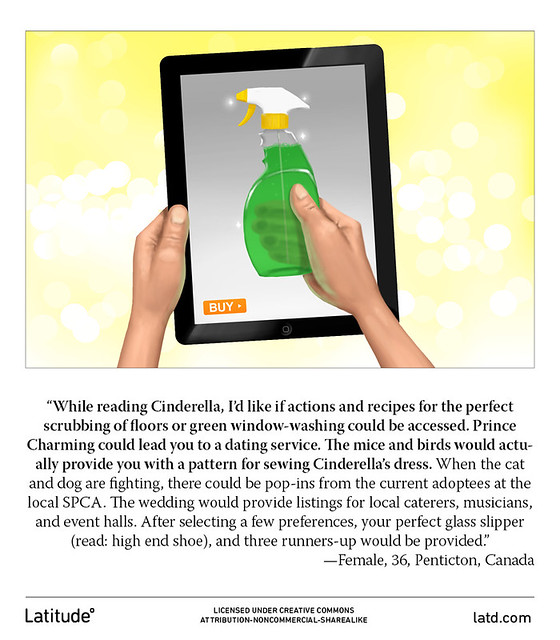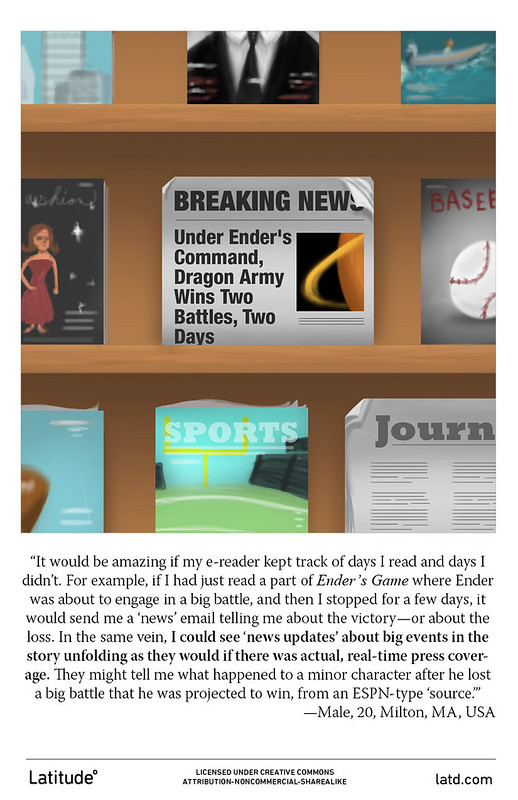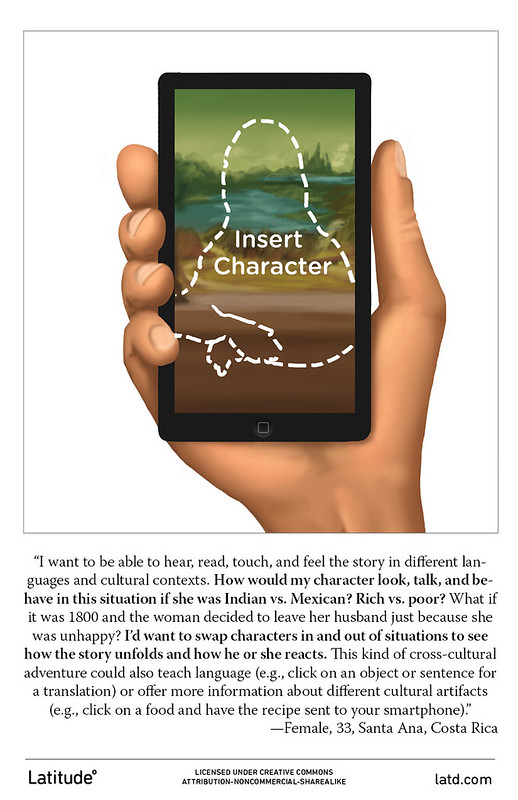Research Reveals Break-Out Thinking By Content Consumers
/ TweetI had three minor experiences last weekend that primed me for some research I came across Monday and want to share with you.
Nothing in the research is specific to the investment management industry. (For that, see the Rock The Boat Marketing post from earlier this month.) But I’m hoping that you’re having a slow pre-holiday week and that you may have the time for some conceptual thinking about the future of content development and what it means for your cross-platform (Web, apps, social media, tablets, smartphones and TV) narrative work in the future.
Today: Content Is Contained
Lately—maybe because I'm accessing content on every possible type of device—I'm more aware of the boundaries of content that's delivered today. To wit:
- A friend and I were catching up about the television show, Grey’s Anatomy, and we agreed that we would dearly love to access these actors and plots online. Specifically, when the surgeons are in the operating room and inappropriately discussing their love lives, we’d like to pause their interactions and click on the long-suffering OR nurses to explore what they’re thinking. We just wish we could go in their direction for a while and watch how the surgeon shenanigans affect their lives.
- I finally coaxed my niece into watching the West Wing series. As we settled in and fired up Disc 1, Season 1, she immediately wanted more context than I could give her—i.e., How long did each actor stay with the series? How popular was the show? Did it win any Emmys? As opposed to focusing on what was on the screen, Katy was half-watching while using her iPad to search for answers to her questions.
- Sunday morning involved a long car ride and I had nothing to listen to except for Living History, an audiobook that somebody gave me from a garage sale. Listening to Hillary Clinton talk about the December 19, 1998, impeachment, I hadn’t remembered the Democrats taking buses to the White House for a rally afterward. I wanted to see this for myself and later spent about an hour online looking for a video clip.
Good content (and obviously, I include network television in that category; you may not) piques curiosity and inspires further exploration and engagement. The exploration usually produces a more satisfying experience. However, today it’s largely up to the content consumer to do the exploring, especially when it’s across multiple media—or transmedia, as it’s called.
Storytelling's Future
So, yesterday I read about a report from Latitude, an international research consultancy that is researching “the future of storytelling.” You might want to start out where I did, which was on the MarketingProfs coverage of the work, and then head to the Latitude blog post.
Latitude's research included interviews with 158 early adopters of technology in 10 countries surrounding the question, "How would you like to experience stories in the future?”
Embedded below are three of nine Latitude illustrations based on verbatim comments gathered during those interviews. People want to break out of content's typical confines, as you'll see.



Cool, right? I also recommend the Latitude research PDF to you for its consideration of the key dimensions of “a good storytelling experience:” Immersion, interactivity, integration and impact.
Is this just blue-sky thinking that has relevance more for fictional work than for marketing investment products? I can see how you might think that, but don't immediately go there. What you market, after all, are solutions aimed at enabling home-buying, college-attending, retirement-enjoying—all journeys that benefit from more versus less visualization and engagement.
As other brands address the limitations that people see in today’s content delivery by providing transmedia content experiences, investment firms may need to, too.



